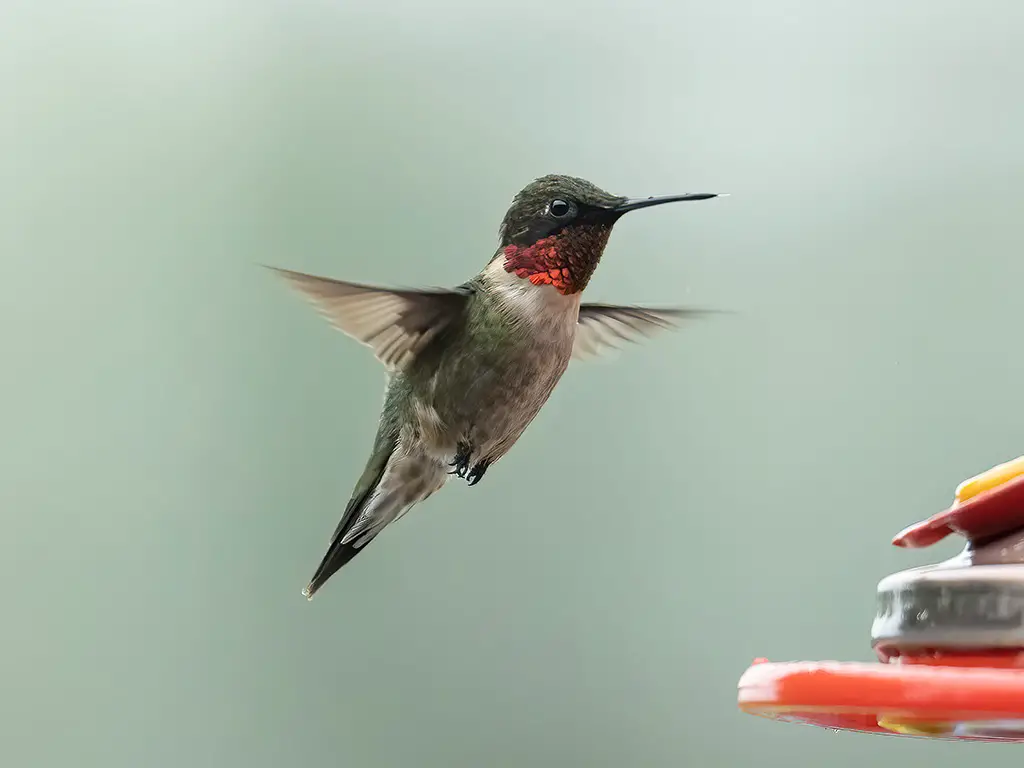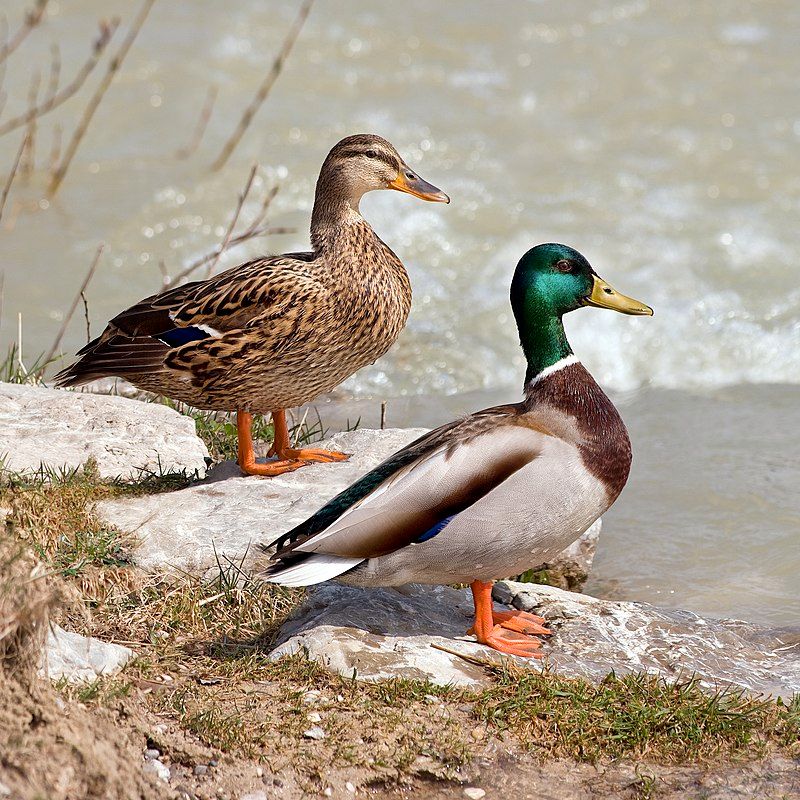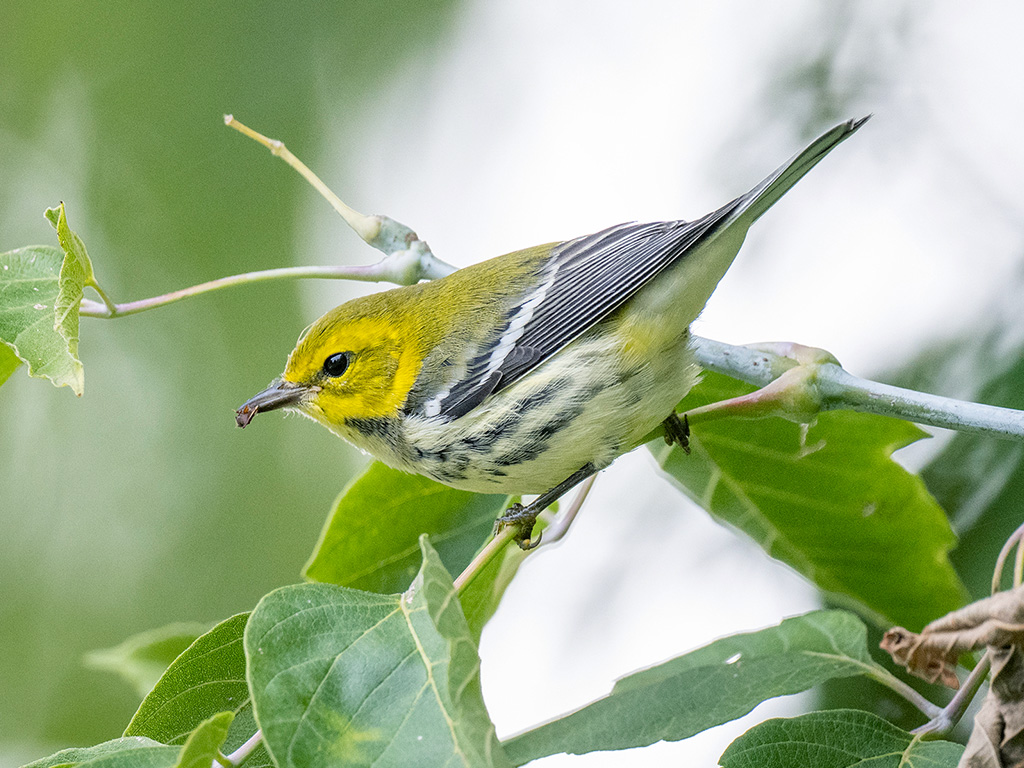Green birds are a vibrant and captivating sight in Connecticut. These beautiful birds add a splash of color to the state’s diverse wildlife and can be seen in various habitats. From state parks to backyards, these feathered friends can be found around Connecticut.
Whether you’re a bird enthusiast or just a casual observer, there’s something special about seeing a green bird in its natural habitat.
In this article, we will explore the different species of green birds found in Connecticut, their habitat, and some of their unique behaviors. So, let’s get started learning about these beautiful and fascinating creatures!
9 Green Birds in Connecticut
Connecticut is a state that boasts a rich diversity of birdlife, with over 400 species recorded. Among these, there are some stunning green birds that can brighten up any birdwatcher’s day.
Here are 9 of these green birds.
1. Ruby-Throated Hummingbird

The ruby-throated hummingbird is a species of hummingbird that is typically found in North America and Central America. It spends the winter months in Central America, Mexico, and Florida and migrates north during summer to breed.
Canada and other parts of Eastern North America are common destinations for the ruby-throated hummingbird. It is a solitary species, which means it will usually only be found alone or in small groups.
During its migration, it has to cover many distance, sometimes for thousands of miles. This is an impressive feat of strength and endurance for such a small bird. The ruby-throated hummingbird is a beautiful species with a vibrant red throat and green back.
They are also known for their incredible flying abilities, being able to easily hover and fly backward and forward. They feed on nectar and can often be found drinking from flowers.
They are an essential pollinator, as they feed from flower to flower and help spread the pollen. The ruby-throated hummingbird is a fascinating species and a welcome sight in many gardens.
Its migration is a remarkable display of strength and endurance, and its beauty and flying abilities are truly impressive.
| Kingdom | Animalia |
| Phylum | Chordata |
| Clade | Strisores |
| Class | Aves |
| Order | Apodiformes |
| Family | Trochilidae |
| Genus | Archilochus |
| Species | A. colubris |
2. Mallard

The mallard or wild duck is a type of duck found in various regions around the world. It is a dabbling duck, meaning it feeds by tipping its bill into the water and filtering out food with its comb-like lamellae.
Its natural habitat is found in temperate and subtropical regions of the Americas, Eurasia, and North Africa. In addition to its natural habitat, the mallard has been introduced to several other areas of the world.
It has been introduced to New Zealand, Australia, Peru, Brazil, Uruguay, Argentina, Chile, Colombia, the Falkland Islands, and South Africa. It is typically found in wetlands, lakes, and ponds in these areas.
The mallard is a resilient species, capable of adapting to different environments relatively easily. It is also a common sight in parks and gardens, where it is famous for its colorful plumage and ability to attract other waterfowl.
As a result of its adaptability and popularity, the mallard is now one of the most widespread birds in the world.
| Kingdom | Animalia |
| Phylum | Chordata |
| Clade | Dinosauria |
| Class | Aves |
| Order | Anseriformes |
| Family | Anatidae |
| Genus | Anas |
| Species | A. platyrhynchos |
3. Green Heron
The green heron is a species of heron that is native to North and Central America. It is a small heron, usually measuring around 45 cm in length.
Its scientific name is Butorides virescens, with the genus name Butorides coming from Middle English butor, meaning ‘bittern’, and the species name virescens coming from the Latin word virescens, meaning ‘greenish’.
This name is fitting, given that the green heron is mostly greenish. The green heron can be found in various wetland habitats, where it uses its long neck to search for food in shallow water.
It primarily feeds on small aquatic life, such as fish, insects, and amphibians. The green heron is an exciting species due to its unique behavior. It can use objects such as sticks and leaves as bait to lure fish to its location, in a process known as ‘tool-use.’
It is one of the few birds known to do this, and it is a fascinating example of complex animal behavior.
Overall, the green heron is a species of small heron that is native to North and Central America and is identified by its scientific name, Butorides virescens, and its greenish coloration.
| Kingdom | Animalia |
| Phylum | Chordata |
| Clade | Dinosauria |
| Class | Aves |
| Order | Pelecaniformes |
| Family | Ardeidae |
| Genus | Butorides |
| Species | B. virescens |
4. Green-Winged Teal
The American teal, or green-winged teal, is a species of duck found in many areas of North America, excluding the Aleutian Islands. It is a pretty widespread species and can be spotted in numerous habitats.
For a long time, the American teal was thought to be the same species as the Eurasian teal, but this misconception was eventually cleared up, and the American teal was recognized as its species.
The American teal is known for its beautiful green wings, a sight to behold in the wild. It is a very resilient species whose numbers remain steady despite environmental pressures.
| Kingdom | Animalia |
| Phylum | Chordata |
| Clade | Dinosauria |
| Class | Aves |
| Order | Anseriformes |
| Family | Anatidae |
| Genus | Anas |
| Species | A. carolinensis |
5. New World Warblers
The New World warblers are a family of birds found exclusively in the Americas. They are small birds, often brightly colored, that make up the family Parulidae.
This family of birds is distinct from the Old World warblers, which can be found in Europe and Asia, and the Australian warblers, which can be found in Australia.
These three groups of singers are not closely related to one another, even though they share the same type of habitat and many of the same behaviors. New World warblers are found in various habitats, ranging from deserts to forests and even some urban areas.
They typically feed on insects and other small invertebrates found on the ground or in the air. These birds are often found in large flocks, which helps them locate food better and stay safe from predators.
The New World warblers are an essential part of the ecosystem, as their presence helps to keep insect populations in check. They also provide food for other birds, such as hawks and owls, and can help to control the spread of certain diseases, such as West Nile virus.
For these reasons, it is essential to maintain healthy populations of New World warblers, as they play an essential role in the environment’s health.
| Kingdom | Animalia |
| Phylum | Chordata |
| Clade | Dinosauria |
| Class | Aves |
| Order | Passeriformes |
| Family | Parulidae |
6. Ovenbird
The Ovenbird is a unique member of the New World warbler family, a small songbird known for its migratory behavior.
It breeds in the eastern parts of North America, where it spends the summer months. Then it migrates to areas of Central America, the Caribbean islands, Florida, and northern Venezuela for the winter.
This behavior allows the bird to take advantage of the more temperate climates in the south during the colder months while also enjoying the more plentiful food sources of the north during the summer.
The bird is a small, nondescript creature with a brown back and a barred chest. It has a long bill that is curved downward, which it uses to forage for insects on the ground. Its wings are short and rounded, with a short tail with a white tip.
Its song is a loud, clear whistle that can be heard from a great distance. The Ovenbird is a common sight in open woods, fields, and shrubby areas. It tends to forage alone or in pairs and builds its nest in the low branches of trees and shrubs.
It tends to be most active during the early morning and late afternoon. The Ovenbird is an integral part of the natural environment, as its diet consists mainly of insects, which helps to keep insect populations in balance.
Its presence is also a welcome sight for bird watchers, who enjoy the beauty of this migratory songbird.
| Kingdom | Animalia |
| Phylum | Chordata |
| Clade | Dinosauria |
| Class | Aves |
| Order | Passeriformes |
| Family | Parulidae |
| Genus | Seiurus |
| Species | S. aurocapilla |
7. Pine Warbler
The pine warbler is a species of bird belonging to the family Parulidae, more commonly known as the New World warblers. It is a small songbird measuring 5-6 inches long and weighing just over half an ounce.
The pine warbler has a short, thick bill and a long tail and is typically a dull yellow color with a grayish head. It can be found in North America, ranging from the eastern provinces of Canada down to the Gulf of Mexico.
It prefers a coniferous or mixed wood forest habitat and is often found in pine, spruce, and fir trees. The pine warbler is a migratory species and can be heard singing in the early spring as it makes its way north from its wintering grounds.
Its diet consists mainly of insects, berries, and seeds, and it often forages on the ground or in low vegetation for food. During the breeding season, it builds a cup-shaped nest of grasses, twigs, and bark strips, which it places in a shrub or low tree.
The female lays a clutch of four to six eggs, which she incubates for two to three weeks until they hatch.
The pine warbler is an essential species for conservation, as its population has declined steeply in recent years due to habitat destruction and other human-caused activities.
As such, it is protected by the Migratory Bird Act, which was created to protect birds from illegal hunting and harvesting. This tiny songbird is a welcome sight in the forests of North America, and its melodic songs are sure to delight birdwatchers and nature lovers alike.
| Kingdom | Animalia |
| Phylum | Chordata |
| Clade | Dinosauria |
| Class | Aves |
| Order | Passeriformes |
| Family | Parulidae |
| Genus | Setophaga |
| Species | S. pinus |
8. Black-Throated Green Warbler

The black-throated green warbler is a small songbird species belonging to the New World warbler family. This species is native to North America and is found breeding in various habitats across the continent.
It is a migratory bird, spending most of its time in the northern regions of its range and wintering in the southern regions.
The black-throated green warbler has a mainly olive-green back, yellowish underparts, and a black throat with a white stripe extending from the neck to the sides of the breast. Its tail is long and pointed, and its wings are short and rounded.
This species is often found in thickets and forests, and it is an active forager, feeding on insects and other small invertebrates. The black-throated green warbler is a vocal species, producing a range of high-pitched songs and calls.
It is an essential species in the ecosystem, providing food for larger predators and dispersing seeds through its foraging habits.
| Kingdom | Animalia |
| Phylum | Chordata |
| Clade | Dinosauria |
| Class | Aves |
| Order | Passeriformes |
| Family | Parulidae |
| Genus | Setophaga |
| Species | S. virens |
9. Mexican Violetear
The Mexican violetear is a type of hummingbird that is medium-sized and has a metallic green plumage. It is found from Mexico to Nicaragua, usually in forested areas.
In the past, the Mexican violetear and the lesser violetear were thought to be the same species, and they were collectively referred to as the green violetear.
However, further research has revealed that these two species are distinct, even though they share physical similarities. They have different ranges, plumage coloration and nesting habits, which has caused them to be separated into two distinct species.
| Kingdom | Animalia |
| Phylum | Chordata |
| Clade | Strisores |
| Class | Aves |
| Order | Apodiformes |
| Family | Trochilidae |
| Genus | Colibri |
| Species | C. thalassinus |
Conclusion
Green birds in Connecticut are a diverse and fascinating group of species. They range from the majestic American kestrel to the colorful Baltimore oriole, and their presence brings beauty and life to the state’s woodlands and gardens.
Although their numbers have declined in recent years due to habitat destruction and other factors, conservation efforts are helping to ensure that these birds will continue to thrive in Connecticut for generations to come.